en
The convenient location of our Gartenhotel Heusser in Bad Dürkheim gives you dozens of opportunities to admire the surrounding nature! Visit the beautiful Palatinate forests and vineyards along the Wine Route.
The motorways A 650, 61, 65,5 and 6 lead you quickly to the Cathedral Cities, Worms and Speyer, allow you to pay a visit to Heidelberg or invite to you make some hopping in Mannhein.
If that's not attractive enough, bear in mind that France lies nearby!
Other interesting excursion destinations take you to the Hambach Castle in Neustadt on the Wine Route, the ruins of the Limburg Abbey or castle ruins in Harden.
Follow the traces of the Roman Empire or indulge in the sweet oblivion of our Asian Garden and Wellness Oasis!
Wenn Sie Sehenswürdigkeiten in Rheinland Pfalz und in Bad Dürkheim besichtigen möchten, können Sie sich auf mehrere historische Bauwerke freuen, die Ihnen die Vergangenheit und die lokale Kultur näherbringen. Wandeln Sie durch alte Mauern, bestaunen Sie die Baukunst vergangener Jahrhunderte und versetzen Sie sich in eine Zeit, die die Region bis heute mit ihren diversen Ausflugszielen prägt.
The Limburg Abbey is a former monastery built in the Romanesque style, on the fringe of the Palatinate Forest in the vicinity of the Rhineland-Palatinate town Bad Dürkheim. Today, only a ruin.
The Limburg was a Benedictine abbey, from 1024 converted into a three-nave basilica and in 1035 in the presence of Emperor Konrad II officially blessed. The structure was built about the same time as the Speyer cathedral.
In 1843 the city bought the ruins and Dürkheim insured it in 1925. When no events are held within its walls, the ruin is accessible for visitors free of charge. In the sacristy of the former monastery there is a restaurant today, the Limburg Abby Larder. From June to the end of August, various outdoor events such as concerts as well as theater and opera performances are held here.
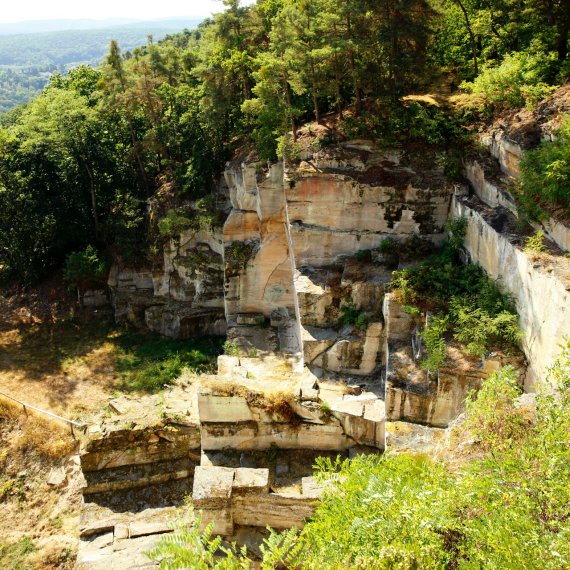
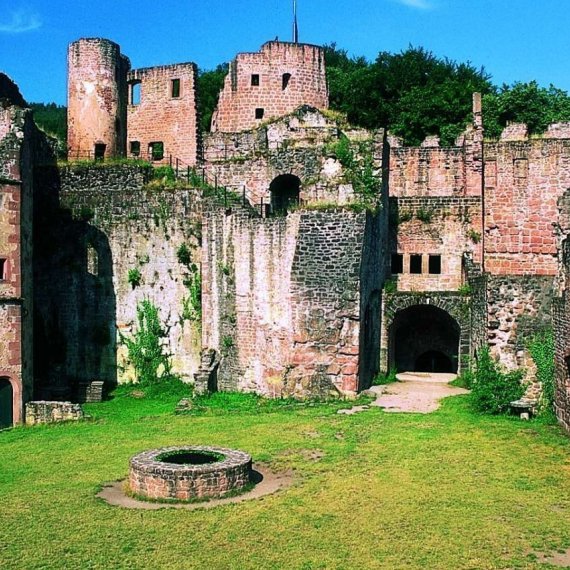
The Harden Castle (Hart = forest, so it's actually Harten Castle = Forest Castle) lies in the district Bad Dürkheim deep in the Palatinate forest.
The castle comes from the 11th century by the Count of Leiningen.
The large construction of 90 x 180 m belongs to the greatest, most powerful and longest residences in the Palatinate region.
The castle is situated on a mountain slope 200 m long over the Isenach Valley which leads you further to the Rhein Plain.
According to the historians, the Villa Rustica is a great farm from the Roman times. The foundations walls have been accidently discovered in 1980. However, in order to protect this precious monument of history, approximately 15000 m2 of the Weinbergen region must have been purchased from the Winzer Family.
Now the area is under care and protection. Unfortunately, since the ground had been used for farming, a great majority of the building rests is now destroyed.
The castle dates back to the 12th century. In the past it belonged to a castle complex of emperor Konrad II (Salian), Emperor Friedrich I (Staufer) and Pfalz Count Konrad von Hohenstaufen. Bear in mind, it had been created as an imperial castle. In the Palatinate War of Succession the Keep was in 1689 partially demolished. In 1984, the ruins of Wachenheim have been transferred to the ownership of the city.
Since then the "District Trust for Renovating the Wachten Castle Ruins" has been working on the care and restoration of the ruins. The castle is a popular destination for hikers, because in the castle inn they can get some rest and then return back to their accomodation place. Because of the location at the top of the mountains, the view over the Rhine Plain and Wachenheim, the castle is also called "The Balcony of the Palatinate." In June the Castle is one of the central places in the Wachenheim Castle and Wine Festival.
Today it constitutes the property of the city. Through contributions of the sponsors' association (District Trust) as well as with the means of village and city clean-up of the castle and the largest reorganisation of the castle have been executed. The most significant renovation part regarded the steel stairs. This process began in 2004 and ended in November 2005. The Keep has been entirely revoted with a cost of EUR 400,000. The over 100 year old steel stairs have also been completely renovated, and then re-installed.
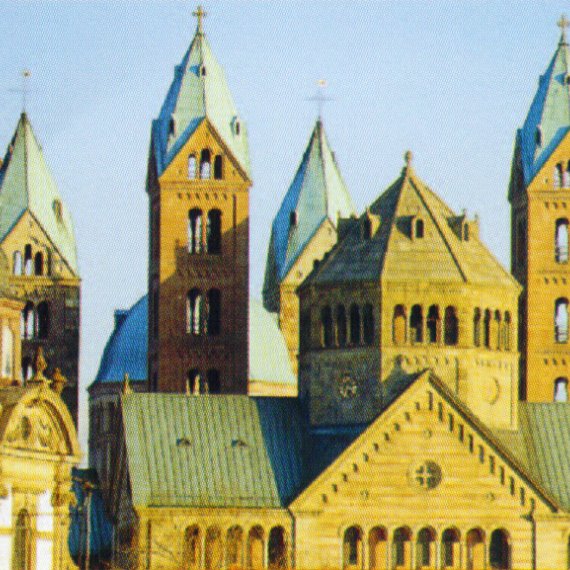
In the shape of a Latin cross, one of the largest and most important Romanesque buildings in Germany: the Imperial Cathedral.
Built by Emperors and destined as their final resting place, symbol of their power. The building process had been started during the rule of the Salian Emperor Konrad II around 1030 and in 1061 the Church could be blessed.
Heinrich IV led conversions and extensions: for the first time at the Speyer cathedral there was a base of walkway along the entire castle lenght built (Dwarf Gallery), turning the construction into a whole new building. Then a blind arch system was also used for the time in the history.
The fire which had occurred in the city in 1689 destroyed large parts of the nave, which in 1758-78 was re-established in the original form. On behalf of the Bavarian King Ludwig I the interior was painted in 1846-53 by John Schraudolph and Josef Schwarzmann as well as their cooperators. The style was the Nazarne movement. In 1854-58 the western facade was re-established by Heinrich Hübsch in the neuromantic style. The restoration works in the 1950s uncovered a painting from the 19th century and the impressive architecture.
Neben den Sehenswürdigkeiten in Bad Dürkheim und Umgebung, die Ihnen historische Bauwerke bieten, gibt es auch noch diejenigen, die Wein und Genuss versprechen. Schließlich steht die Pfalz unter anderem für genau diese Annehmlichkeiten: Trinken Sie gemütlich oder festlich ein leckeres Glas Pfälzerwein an einem Ausflugsziel, das Sie entspannt vom Hotel Heusser aus erreichen.
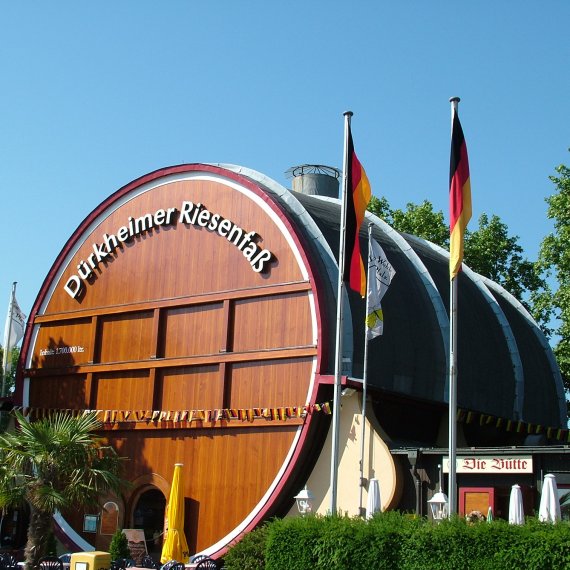
The great wine barrel called Giant Cask, by the local inhabitants usually named simply "Därgemer Fass" is a tourist attraction of the Palatinate spa town Bad Dürkheim and the German Wine Route.
It is therefore the largest wine cask of the world with a capacity of 1.7 million liters, built in 1934 by the local cellarman Fritz Keller.
The barrel was never filled with wine, yet now there's a fancy wine bar and fine dining restaurant inside. The interiors of the giant wine barrel have been designed as a typical wine bar of any kind. It's open daily from 10:00 am. There are two levels (ground floor and gallery) and enough place for as many as 430 guests. Because of the large number of visitors, in 1958 a wooden barrel-like platform had been built which offers space for 120 additional guests.
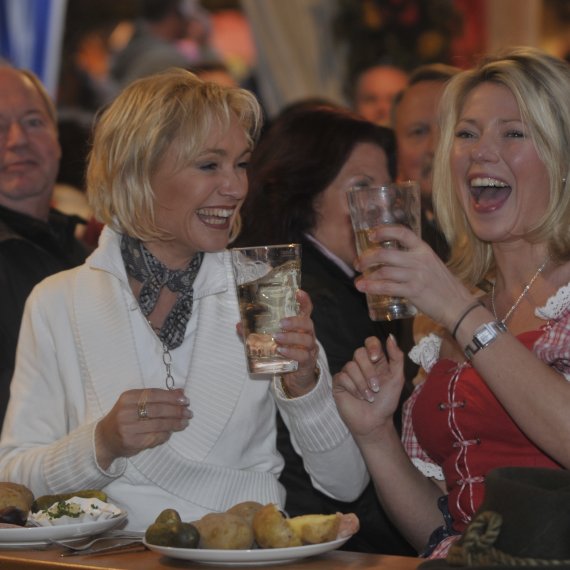
Neben dem Dürkheimer Riesenfass haben Sie außerdem die Möglichkeit, saisonale Sehenswürdigkeiten in Bad Dürkheim und der Umgebung zu erkunden, die Ihnen köstliche Weinmomente versprechen. Besuchen Sie dafür einfach die zahlreichen Weinfeste der Region! Viele Winzer sorgen für eine diverse Auswahl an leckeren Weinen aus der Pfalz, sodass Sie in fröhlicher Atmosphäre neue und altbekannte Weinsorten probieren können.
Sehenswürdigkeiten in Rheinland Pfalz gibt es also zur Genüge – aber die Region an sich kann ebenfalls als solche bezeichnet werden! Manchmal reicht auch ein Ausflug in die umliegende Natur, um sehenswerte Orte zu entdecken und schöne Momente zu erleben. In Bad Dürkheim vom Hotel Heusser aus ist ein Spaziergang in die Natur ganz einfach möglich, weil das Wellnesshotel von idyllischen Landschaften umgeben ist. Ob sportlich oder gemütlich – genießen Sie vielseitige Aktivitäten in der Pfälzer Natur!
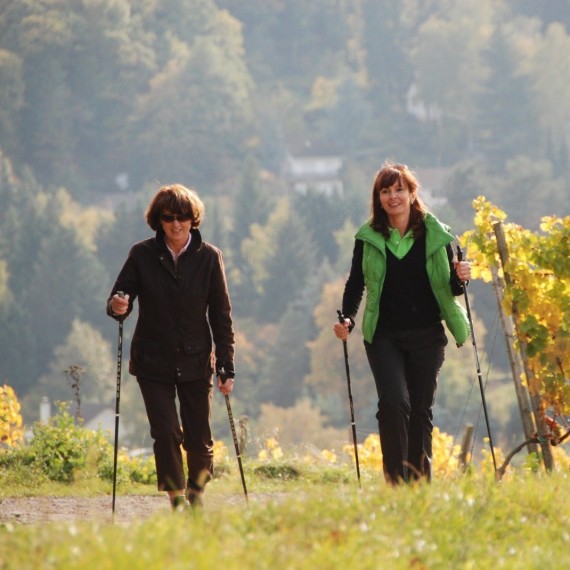
Nordic Walking is right within your grasp. Numerous walking routes will certainely match the task!
We'd like to invite you most wholeheartedly to enjoy the beauty of the Bad Dürkheim, Reben Sea and Palatinate Forest. That's a land full of contrasts and surprises! A place where history becomes a living lesson of the past, where forsaken times turn into modernity.
The Nordic Walking allows you to train your whole body, stimulating more than 90 % of your muscles. Both your back, buttocks and hips can be beautifully shaped.
The dynamic walk forms also your arms, shoulders, chest and back.
What is more, it allows you to burn those few extra kg.
The soft movements on the fresh air improve the oxygen supply and relax your soul, fighting off the stress and strenghtening the soul.
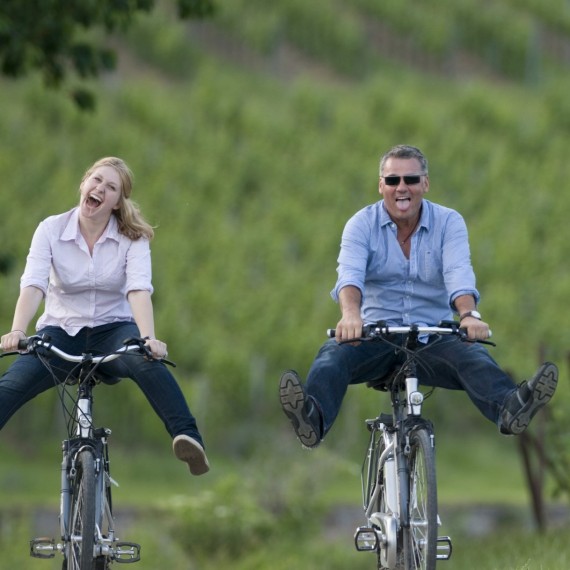
Are you a fan of cycling? You couldn't have found a better place for practising your hobby! Bad Dürkheim opens a great variety of bike trails! The German Wine Route along the Hardt Mountains can be a good starting point of your journey.
Is there anything more pleasant than cycling and breathing with fresh mountain air at the Reben Sea, soft hills and pleasant descents.... The homeland of the Riesling wine - a true petal of the region!
Directly at the hotel we will offer you a bike rental or a e-bike rental. Upon booking your room, reserve a bike as well!
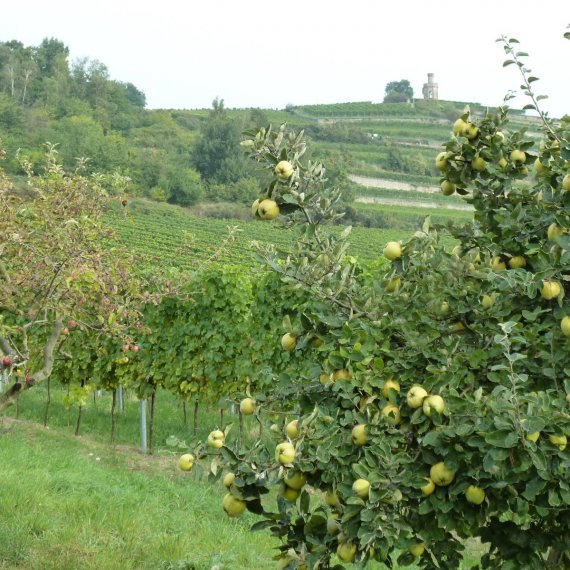
Hiking is a peace of cake! With us you can get lots of hiking ideas for every taste.
The Heusser Hotel is certified as the Quality Host and awarded with the seal Wanderbares Deutschand (Wandering Germany).
Your everyday life is stressful and you need a break? Our tip: hiking on the most beautiful hiking trails around Bad Dürkheim, in the Palatinate Forest and along the German Wine Route! Whether a short hike or a full day.
